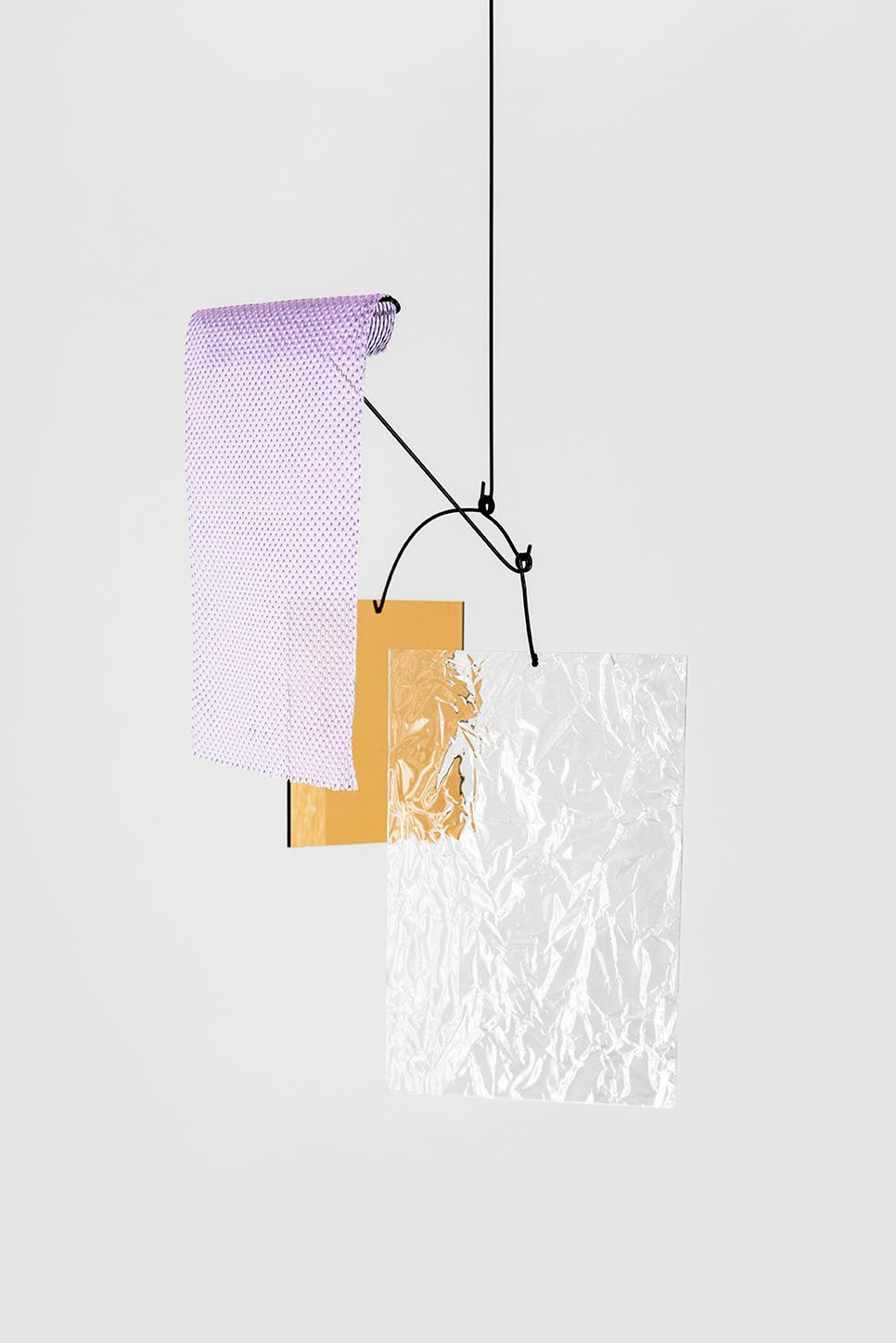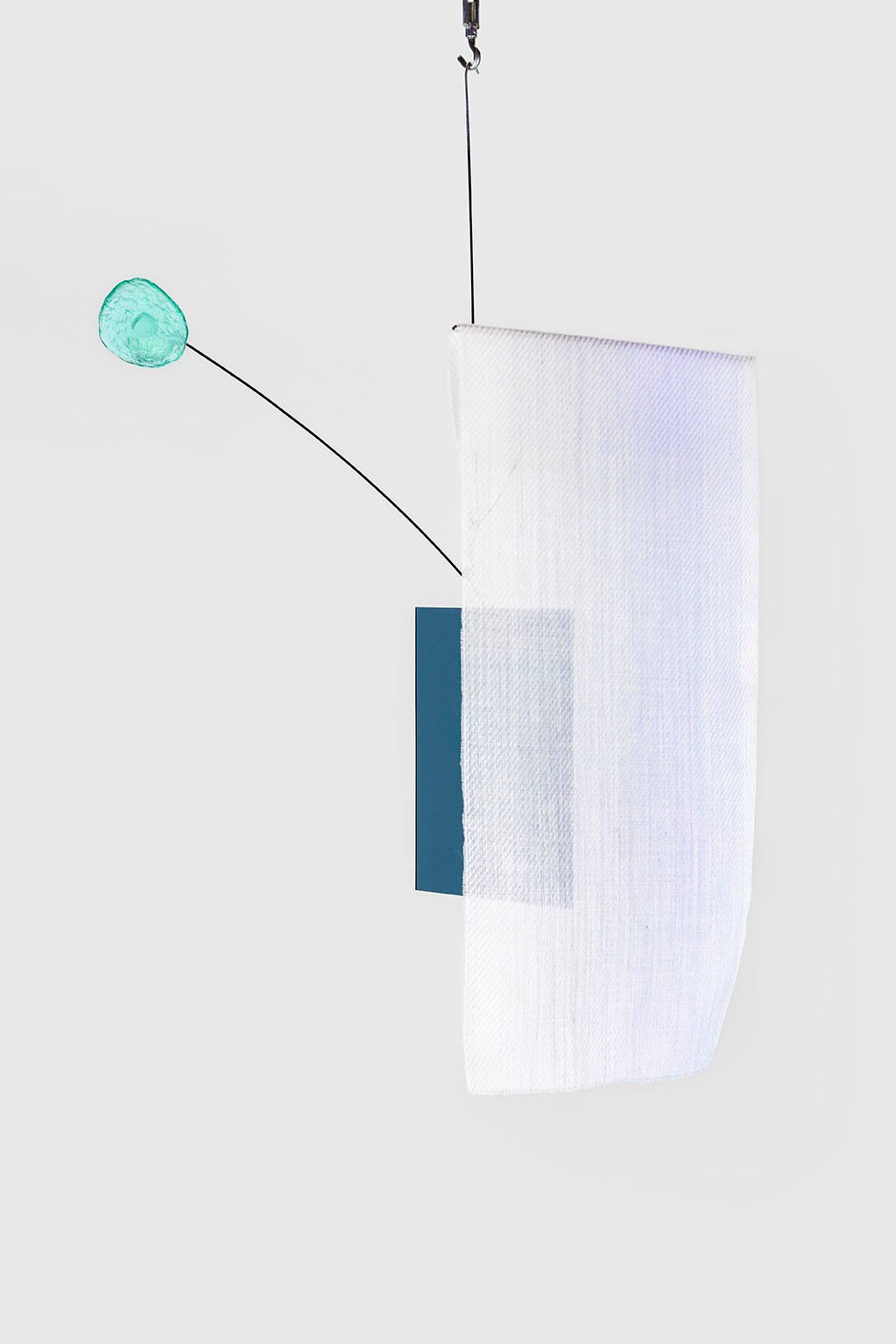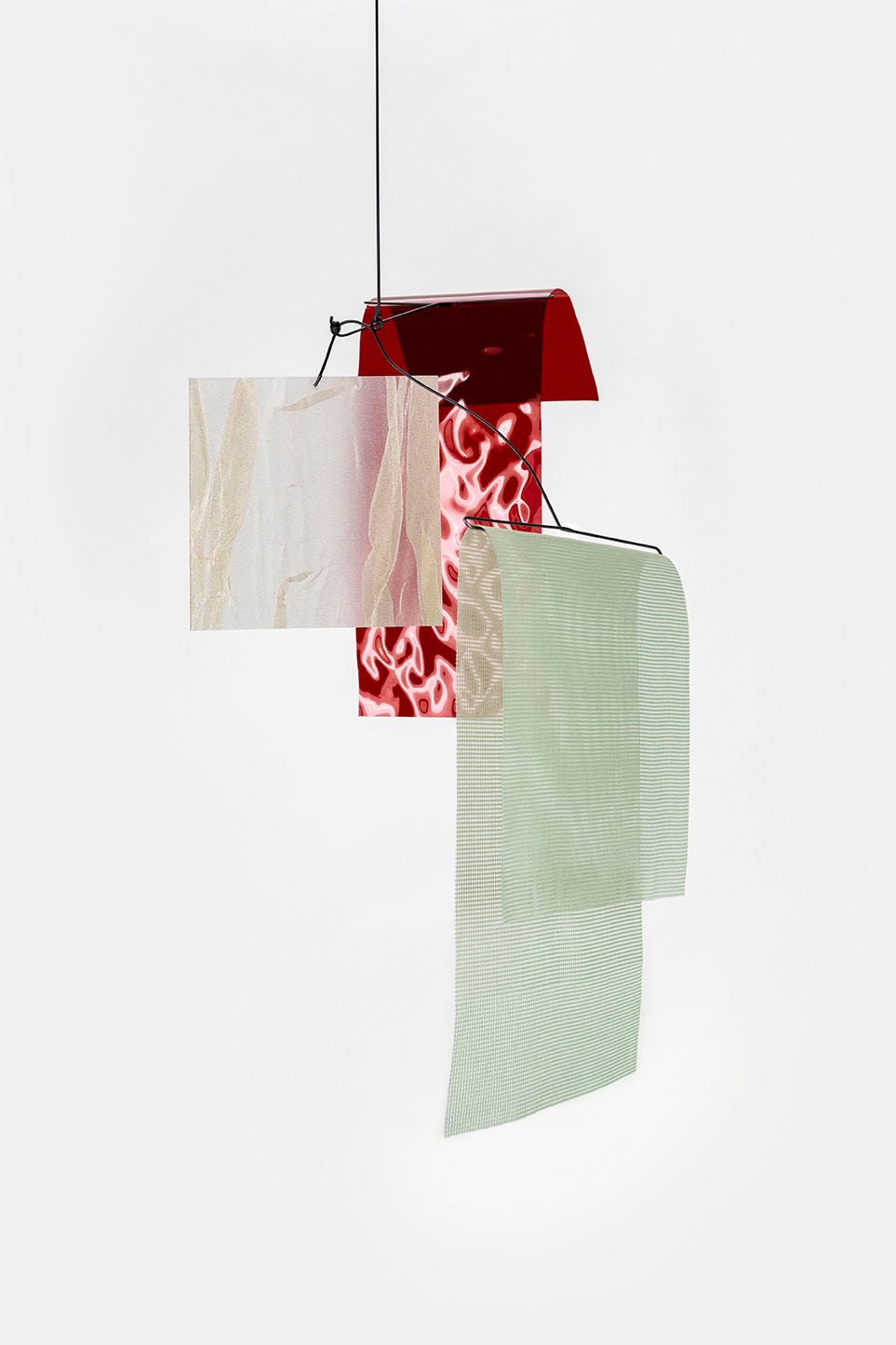Translucency in collaboration with Envisions
art direction Sanne Schuurman
visuals Fabian Briels
text Fred Erik
the material lookout
translucency
Translucency is an intriguing material quality. By filtering our perception of what’s behind, transparent materials influence how we perceive our environment by altering colours, concealing parts, reflecting light, and deforming shapes.

A completely different translucent quality is evoked by the Impuls textile range by Dutch manufacturer Kendix. Built-up from a light – nearly invisible – textile base-layer, an embroidery-like top-layer with thicker coloured threads creates an intriguing interplay between transparent and opaque. The sensitive graphic movement of the top-layer adds a gentle touch to this contrasting quality, making it a warm and welcoming material for domestic applications. The duo-tone top layer creates subtle, but refined colour combinations that add ambiance and a sense of depth to the flat textiles. Because of this interaction between transparent and opaque, the textiles add privacy to both the external and internal interaction of a space. Additionally to their logical application as curtains, the material is suitable as room dividers for open-plan office spaces, offering isolation while maintaining spacial characteristics.

It triggers new perspectives on familiar materials and unravels novel qualities in what we already know. Combining multiple materials with translucent qualities pushes these influences and effects to new heights. Thereafter, a diverse chain-reaction of translucencies gives rise to mesmerising interactions and effects.
Exemplary is the Colour Changing Glass by Dawn Bendick which – as the name predicts – changes color when exposed to different light conditions. Because of this chameleon-like quality, the moulded glass fragment discolours differently when being illuminated by natural or artificial light sources. Adapting itself to environmental conditions, applications in evolving interior concepts where the atmosphere changes when transitioning from day to night, are self-evident. Since these types of transitions are usually created solely by artificial lightning, the material adds a mystical touch with artisanal aesthetics to any interior

Thirdly, distorting visual qualities are being served by the Versato Ice Structure sheets by Pyrasied. The clear plexiglass panels feature an icy, paper-like structure that heavily morphs what’s behind and gently reflect what’s in front. Because of the absence of colour, the material only reaches its full potential when being placed in an intriguing context. Because of this quality, the panel settles for a secondary role and puts its surroundings on display.
Altogether, these examples present diverse ways in which translucent materials can light up a room by filtering the way we perceive our environment. They illustrate the various interactions transparent materials can have with their surroundings – and with one another – while evoking dazzling new material perspectives.
materials
Dawn Bendick – Colour Changing Glass
Pyrasied – Versato ice structure, Greencast in dark blue & brown
3form – Varia in swept silver
Lee Filters – Shade 182
Kendix – Impuls 31, Refine 03
De Ploeg – Mesh 05



